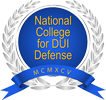Legal Consequences of Property Vandalism
Understanding Criminal Mischief Charges
- Defining the Offense: Criminal mischief involves actions like vandalism where someone’s property is marred, harmed, desecrated, or tampered with wrongly.
- Severity of the Crime: Normally treated as a minor misdemeanor, criminal mischief can escalate to a felony if it includes serious damage.
- Law Enforcement Judgment: Often, what constitutes criminal mischief lies with police discretion. First-time offenders could access diversion initiatives, potentially circumventing jail time and a mark on their criminal record.
Seeking Legal Assistance in Youngstown, OH
If you find yourself apprehended for suspected criminal mischief in any part of Mahoning County, it’s critical to refrain from discussing with law enforcers without a Youngstown criminal lawyer present. Reach out to Youngstown Criminal Law Group for experienced counsel to safeguard your rights.
Renowned Youngstown OVI lawyer Sean Logue, serving the Youngstown area, has successfully defended clients facing accusations related to defacing property. Take advantage of a no-cost, private meeting to go over your case details and get answers to your legal queries by calling (330) 992-3036 at your earliest convenience.
Criminal Mischief Definitions in Mahoning County
In Mahoning County, and indeed throughout Ohio, criminal mischief is a term detailed in Ohio Revised Code § 2909.07, with specific definitions found in § 2913.01. Here’s a clearer breakdown of the key terms to help our readers better understand what each means:
- Computer: This refers to an electronic device designed to follow instructions to perform a variety of functions involving logical operations, arithmetic computations, and storing information. ‘Computer’ encompasses the devices that feed in data (input), display or transmit results (output), undertake operations (processing), store info (storage), as well as the associated programs, and communication networks that link such functions.
- Computer System: Think of this as an entire setup that includes a computer along with auxiliary gadgets. These could be separately located or connected together. Components like devices that input data, produce output, store data, establish data communication connections, and the software and information that enable the system to execute specific tasks are what compose the ‘Computer System.
- Computer Network: This is essentially a collection of interconnected computers that are linked through communication resources. A ‘Computer Network’ includes more than just one computer system and has the capabilities to facilitate data transfer between various computing devices and communication tools through computer-mediated channels.
- Computer Software: This term generally covers the tools that help operate a computer system, including the programs, procedures, and related guidance documents necessary for the system’s functioning.
- Computer Program: Consider this the blueprint that instructs a computer on what to do. It’s a sequence of coded data or commands that prompts a computer to process and analyze data when executed.
- Computer Hacking: This involves any action that aims to gain unapproved entry into a computer, system, or network, whether it’s for committing fraud, a crime, or any unauthorized purpose. Specific examples include the unauthorized use of computer services like email forwarding systems, file sharing tools, or switching web traffic using proxy servers, potentially leading to the improper redirection of users.
Understanding with Clarity
These definitions are part of the larger framework that helps law enforcement agencies and the legal system classify and prosecute acts of ‘Criminal Mischief.’ By understanding these terms,
Computer Contaminant
A computer contaminant is a program specifically crafted to interfere with or damage a computer’s operations or to hijack the system’s functions without the owner’s clear permission. This unauthorized program fits into several categories, which include but are not limited to:
- Viruses and Worms: These are self-replicating programs designed to spread across programs and systems. Their intent is to interfere with operational performance, damage or alter files and data, hog system resources, and create security breaches.
- Trojans (Trojan Horses): Unlike viruses and worms, Trojans do not replicate but disguise themselves as legitimate software. They are intended to undermine security defenses, consume resources, modify or delete information, or disrupt the computer’s normal functioning.
- Zombies: These programs commandeer a user’s computer without their knowledge to carry out tasks like launching large-scale attacks that overwhelm other networks or servers, known as Denial of Service (DoS) or Distributed Denial of Service (DDoS).
- Trap Doors/Back Doors/RootKits: These terms describe programs created to evade standard login procedures. They grant unauthorized users access or control over a computer without the owner’s knowledge or consent.
Safety Device
Safety devices are essential tools and equipment meant to ensure the safety and protection of individuals and properties in case of danger or emergency scenarios. They can be classified as:
- Fire Defense Equipment: Items such as fire extinguishers, hoses, axes, escapes, exits, and other emergency gear designed to combat fires and aid in swift evacuations.
- Emergency Signaling: This category includes alarms, lights, flares, signs, or notices that alert potential hazards or signal emergencies, all purpose for the safety and well-being of people.
- Protective Barriers: Safety essentials like guard railings, barricades, traffic signs, and railroad crossing indicators fall under this type to guide and protect in potentially dangerous zones.
- Life-Saving Apparatus: Devices such as life lines, rings, preservers, boats, or rafts that are indispensable in life-threatening situations, particularly in water-related incidents.
- First Aid and Survival Gear: This grouping encompasses all equipment and tools designed to provide immediate medical assistance or support survival in emergencies.
The restructured content aims to retain the original text’s authoritative tone and factual correctness while enhancing readability for a wider audience. It organizes the information into clear categories, enabling users to quickly grasp the complexities of computer contaminants and the breadth of safety devices.
Criminal Mischief Penalties in Youngstown
Criminal mischief is a legal offense that can lead to serious consequences in Youngstown. The specific penalties can vary depending on the type of violation committed. Here’s a clearer breakdown of what criminal mischief entails and the potential legal repercussions for such acts:
Acts of Criminal Mischief & Corresponding Penalties:
- Tampering with Property: If a person knowingly alters or causes harm to someone else’s property, or their own, to reduce its value or enjoyment—particularly if the property is mortgaged and involved in a foreclosure action—the offender could face up to 60 days in jail and/or pay a fine up to $500. This is considered a third-degree misdemeanor.
- Use of Harmful Devices: Utilizing a device that emits harmful or offensive substances, like tear gas or stink bombs, to disrupt someone’s property use or enjoyment can similarly result in up to 60 days of jail time and/or a fine reaching $500.
- Interfering with Survey Equipment: Damaging or manipulating surveying instruments, such as boundary markers or bench marks, is prohibited. Doing so can carry penalties of up to 60 days in jail and/or a maximum fine of $500.
- Compromising Safety Devices: Tampering with any equipment or property intended for people’s safety, thereby reducing its effectiveness, could also lead to jail time for up to 60 days and/or fines up to $500.
- Setting Fires: Intentionally setting fires on someone’s land or placing burning objects on their property may lead to increased misdemeanor charges. This could result in a sentence of up to 180 days in jail and/or a fine of as much as $1,000, especially if the act poses a risk of physical harm to anyone.
Elevated Risk Incidents:
For more serious infractions involving risk of physical harm or use of fire that poses a risk of physical harm, the offense is escalated to a first-degree misdemeanor. Such infractions could face up to 180 days in jail and/or a maximum fine of $1,000.
Criminal Mischief Involving Aircraft:
The penalties further escalate if an aircraft or associated parts and equipment are involved. Here’s how the law breaks down:
- Risk to Aircraft Components: Tampering with any element of an aircraft or its operation, which includes everything from the engine to cargo, is a fifth-degree felony. The penalties include up to 12 months in prison and/or a fine up to $2,500 if there’s a risk of physical harm.
- Substantial Risk or Occupied Aircraft: If the violation results in substantial risk of physical harm or involves an occupied aircraft, the crime becomes a fourth-degree felony. Offenders could face up to 18 months in prison and/or a fine not exceeding $5,000.
Understanding these penalties is crucial for anyone living in or around Youngstown, as well as for visitors to the area. Engaging in criminal mischief is a serious crime with ramifications that could impact one’s freedom and finances significantly. Always think twice before interfering with other people’s property and be aware of the strict consequences that can follow.
Understanding Criminal Mischief in Ohio
Criminal mischief can carry significant penalties in the state of Ohio, specifically when it involves tampering with computers and their networks. Here’s an intelligible breakdown of how such offenses are viewed under Ohio law and the potential consequences that can follow.
First-Degree Misdemeanor for Computer Tampering
Under the Ohio Revised Code § 2909.07(A)(6), any individual who deliberately engages in the following behaviors without authorization may be charged with a first-degree misdemeanor:
- Altering, damaging, destroying, or modifying any computer, system, network, software, program or the data they hold, through any method including hacking.
- Introducing harmful computer contaminants like viruses into any computer or network.
When Does Criminal Mischief Escalate to a Felony?
The severity of criminal mischief charges escalates based on the impact or the intent of the wrongdoing. Specifically:
- It is considered a fifth-degree felony if the damage or loss is valued between $1,000 and $10,000 or if the affected computer is tied to aircraft operations, potentially risking harm to individuals.
- If the harm involves computers integral to aircraft operations that could substantially endanger individuals or an occupied aircraft itself, or if the damage or loss amounts to $10,000 or more, the act rises to a fourth-degree felony.
Helpful Ohio Resources for Criminal Mischief Cases
The Ohio Revised Code § 2909.07 provides a comprehensive view on the legal framework surrounding criminal mischief offenses. By consulting this provision, readers can understand the terminology and classifications pertinent to various offenses.
- Full Legal Text Access: You can read the complete law detailing criminal mischief in Ohio at Ohio Revised Code § 2909.07.
- Offense Classifications: See how Ohio law categorizes different levels of offenses and get to know the precise definitions employed within this legislation.
Criminal mischief, especially involving computers and networks, is treated seriously in Ohio with stringent repercussions. Whether you’re just curious about the law or are seeking information for legal purposes, understanding these ramifications can be crucial.
Youngstown’s Premier Criminal Mischief Defense Lawyers at Youngstown Criminal Law Group
Facing allegations of criminal mischief in Ohio can be daunting. Prompt action and experienced legal representation are your best allies. At Youngstown Criminal Law Group, we take a proactive stance in protecting the rights of our clients across Mahoning County and its environs.
Our Youngstown Criminal Law Group stands ready to support Immediate Legal Assistance: Secure your peace of mind by partnering with our dedicated Youngstown criminal attorneys right after an arrest.
- Robust Defense Strategies: Sean Logue, a seasoned Youngstown OVI attorney, commits to delivering a strong defense aimed at minimizing potential penalties.
- Community-Oriented Representation: We advocate for individuals within the Mahoning County area, understanding the unique aspects of each community.
- Outcome-Focused Approach: Our legal team diligently works towards the most advantageous resolution for your situation.Ensure you’re informed and empowered to face your legal challenges. Dial (330) 992-3036 now, or complete our simple online contact form to kickstart your defense with a free, thorough case assessment.








